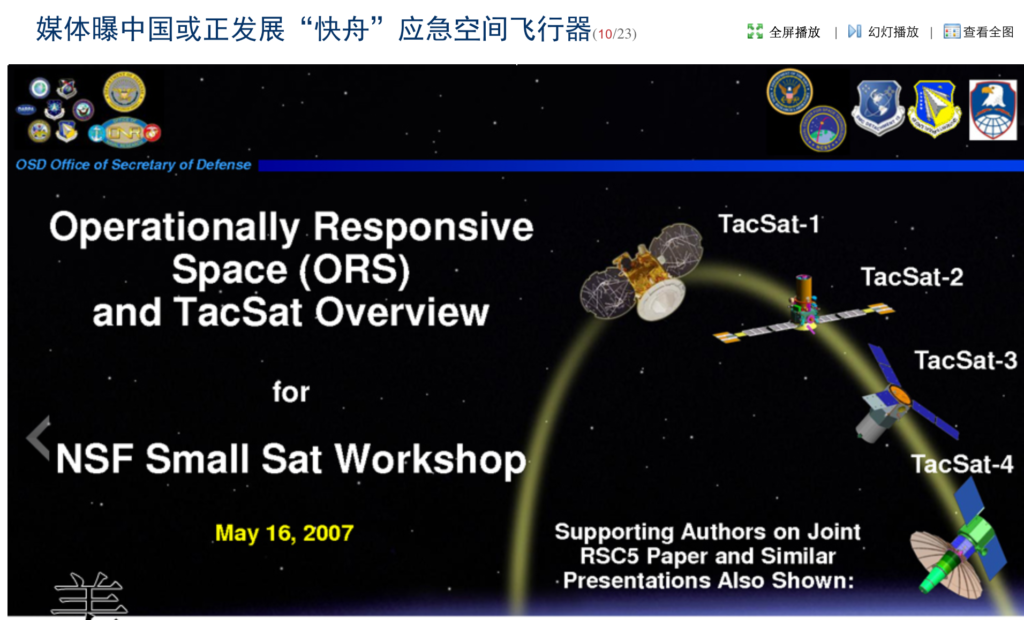
Screen capture from recently deleted Chinese news post on the 25 September 2013 launch of China’s Kuaizhou 1
On 25 September 2013 China launched another earth observation satellite into orbit. The spacecraft, identified in Chinese press reports as the Kuaizhou 1, is a small earth observation satellite that will be used for disaster management and will be operated by China’s National Remote Sensing Center. But the launch had a second purpose: to test a new solid-fueled launch vehicle the Chinese military plans to use to provide a rapid ability to replace Chinese satellites that might be damaged or destroyed by an enemy attack.
The United States military refers to this capability as Operationally Responsive Space (ORS). Having this capability would allow both militaries to rapidly replace satellites that might be damaged or destroyed in an anti-satellite (ASAT) attack with small but “good enough” satellites able to restore at least some of the functions of the satellites lost. The Pentagon’s ORS office, like the Chinese military, is also using non-military satellite launches for non-military partners to develop its ORS program. For example, the Pentagon’s ORS office is currently working with the University of Hawaii to launch a small imaging satellite called the HiakaSat.
According to a February 2013 Chinese press report on the Kuaizhou program, this new Chinese military space capability will be operated by the 2nd Artillery, the branch of the Chinese military that operates China’s land-based missile forces, including its land-based nuclear missiles. The February report indicates the Kuaizhou program calls for pre-positioning launchers and their attached satellites at various locations around the country. Should Chinese satellites used to provide imaging, communication and data relay functions come under attack during a time of war, the 2nd Artillery could launch small replacement satellites into orbit within a few hours.
For more than a decade, U.S. analysts and observers of China’s military space activities have claimed China is pursuing an “asymmetric” military strategy in space that may include plans for a “space Pearl Harbor” attack on U.S. space systems. These U.S. interpretations of Chinese strategy, which were repeated in a recent report from the Stimson Center, are based on the assumption that because Chinese space capabilities are less developed, and supposedly less important to the Chinese military than those of the United States, China has less to lose from making space a battlefield.
While by no means definitive, China’s pursuit of an ORS capability suggests that maintaining Chinese space capabilities in a time of war may be more important to Chinese military strategists than U.S. observers and analysts normally assume. Consider the following passage from a highly classified 2003 text on 2nd Artillery operations. It indicates that as early as a decade ago, Chinese military planners concluded space offers unique capabilities that are increasingly important,
“… owing to the fact that missiles are extremely complicated weapons systems whose use in warfare cannot be separated from intelligence, communication, surveying, weather, damage assessment and similar types of support. Moreover, for all of these, simply relying on ground equipment is already useless, and reliance on the support of military space systems such as intelligence satellites, communication satellites, surveying satellites and weather satellites is necessary.”
It seems clear the Chinese military and the U.S. military are both concerned about the loss of space capabilities in a time of conflict and are pursuing the same means to compensate for it. This shared concern could form the basis for meaningful bilateral talks on space security that lead to a mutual understanding, and possibly a formal agreement, to refrain from attacks on each other’s satellites.
